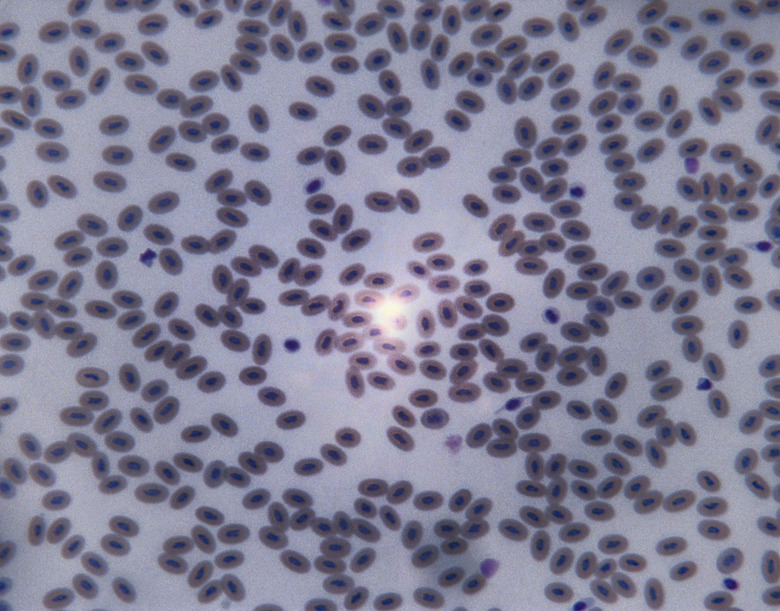What Can Stop Glycolysis?
Living cells feed on glucose. Although there are some other molecules that can serve in a pinch, most of the energy in living cells – including the energy that makes your life possible – comes from splitting glucose into smaller molecules.
Glycolysis starts with one 6-carbon glucose molecule and ends with two 3-carbon molecules of pyruvate, which then convert to two smaller molecules of citrate. But it's not just one snip: it takes 10 different chemical reactions to get the job done, and the process can be stopped along the way by inhibitors of glycolysis.
Enzymes in Glycolysis
Enzymes in Glycolysis
Enzymes are protein molecules that help a chemical reaction along. Every chemical reaction takes a little energy boost to get started, and enzymes work by reducing the energy boost, known as the activation energy.
It's not that those chemical reactions couldn't take place at all without enzymes, but enzymes make them far more likely to occur.
Three of the 10 steps of glycolysis involve such large changes in energy that they will almost never take place without enzymes, so those particular steps are important points for the regulation of glycolysis.
What Glycolysis Does
What Glycolysis Does
Glycolysis is the first step in the energy metabolism of cells.
It's something like eating an apple. If you always first cut the apple in half and peel it and eat the peel, and only then cut the apple into smaller bites and eat it, then glycolysis would be only the steps of eating the peel and cutting the apple in half. The end product is the two apple halves and a little bit of energy from eating the peel.
If you already had a pile of peeled apple halves or you didn't need the energy you'd get from the apple peel, you'd stop working on new apples. Your cells do the same thing, but the end product is molecules of citrate instead of apple halves, and the energy in your cell is carried in adenosine triphosphate, ATP.
Regulating Enzymes
Regulating Enzymes
Glucose gets transported into a living cell by a transport protein. The same protein that brings it in will carry it right back out again, but not if its structure has been changed.
One enzyme rearranges atoms in the glucose molecule to turn it into fructose. Then the phosphofructokinase or PFK enzyme joins a phosphate group to the fructose molecule. That readies it for the next step in glycolysis and also prevents the transport protein from taking the sugar back out of the cell.
If there's already a lot of ATP and there's also plenty of citrate, PFK will slow way down. In the same way you don't need to slice another apple if you aren't hungry and you have plenty of slices lying around, PFK doesn't need to act if there's plenty of ATP and lots of citrate; high levels of those compounds will reduce glycolysis.
Regulation of Glycolysis in Other Ways
Regulation of Glycolysis in Other Ways
Some of the steps of glycolysis require the intermediate products to get rid of a hydrogen atom so they can continue to break up and provide more energy. If there's no other molecule to accept the hydrogen atom, then glycolysis will stop.
In this particular case, the molecule that accepts the hydrogen atom is NAD+. So glycolysis will stop if there's no NAD+.
The rate of glycolysis is also modified depending upon the amount of glucose around. If no glucose molecules are transported into the cell, then glycolysis will stop.
Cite This Article
MLA
Gaughan, Richard. "What Can Stop Glycolysis?" sciencing.com, https://www.sciencing.com/can-stop-glycolysis-22851/. 8 March 2019.
APA
Gaughan, Richard. (2019, March 8). What Can Stop Glycolysis?. sciencing.com. Retrieved from https://www.sciencing.com/can-stop-glycolysis-22851/
Chicago
Gaughan, Richard. What Can Stop Glycolysis? last modified August 30, 2022. https://www.sciencing.com/can-stop-glycolysis-22851/
